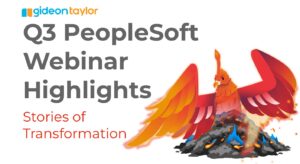As a consultant, there are times when a client asks for a feature to be built that is not in their best interest and the challenge is always: do I just do it or advise them against it? This is never easy because, as a consultant, you are supposed to give the client what they want; after all, it is their money. I gave them what they wanted without question for years and then, one day, I awoke to the fact that an excellent consultant provides leadership to make good decisions and sometimes that decision is ‘No’. But then I was faced with the challenge of how to WOO (Win Others Over) them into making a decision based on information, not emotions. That is when I started providing them an informed decision document on key requirements so they could have the information to make decisions for their organization.
Persuasion is key to the informed decision document. In our business, persuasion is a process aimed at changing a person’s (or a group’s) attitude or behavior toward our Vision (ideas) by using written or spoken words to convey information, feelings, or reasoning, or a combination thereof.
To persuade someone, you must understand and address the “real reasons” that the person has made the request and address those. Using logic will not persuade the person if the reason for the request is emotional instead of logical. Take time to understand the “real reasons” so you can focus the informed decision document on those reasons.
An example of this was a client who wanted to add complex logic to determine when a field would be open for update by the HR group. The real issue was that they did not trust their HR team to only update the field when needed. In the informed decision document, I provided them information on the cost of this edit vs. the risks of someone updating it incorrectly. Once they saw the whole picture they decided that providing a job aid was more cost effective. In a follow up after 6 months of production use, the error they were so concerned with had not happened.
The best part of using the informed decision document to assist your client in saying ‘No’ is that it builds trust in your leadership and guidance, resulting in a team-focused project that the client can feel comfortable taking ownership of.
Written by Mary Funk, Solution Architect
Copyright (c) 2016 Gideon Taylor Consulting, All Rights Reserved.






